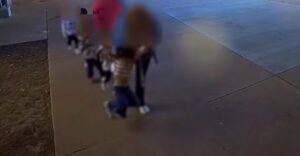The origin and transportation of the gigantic stone statues of Easter Island remains one of the most captivating and enigmatic archaeological mysteries in the world. However, a new scientific study appears to provide answers to one of the most critical questions.
Read: Stonehenge vandalized – Climate activists spray it with paint
The massive statues, known as Moai, weighing between 12 and 80 tons, have sparked decades of awe and questions about how the ancient Rapa Nui civilization managed to move and position them without the aid of modern tools or machinery. Through three-dimensional modeling and experimental testing, researchers have reached the impressive conclusion that the Moai actually “walked” to their final destination.
For decades, anthropologists believed that the Moai were placed on flat surfaces and dragged to their destination using logs or rollers. This hypothesis required, according to the Daily Mail, enormous human strength and would make moving the largest statues – some exceeding 70 tons – practically impossible.
However, increasingly more evidence shows that the inhabitants of Rapa Nui had developed a much more ingenious and effective technique.
Studying nearly 1,000 of the statues, scientists discovered that the Rapa Nui inhabitants likely used ropes to move the Moai in a lateral zigzag motion, transporting them in an upright position.
Specifically, by tying ropes to the sides of the statues and pulling them alternately to each side, they managed to “rock” them in a motion that resembled “walking,” allowing the Moai to move forward.
Easter Island: The statues were carefully designed to “walk”
Professors Carl Lipo (Binghamton University) and Terry Hunt (University of Arizona) had previously tested this theory with smaller replicas of the statues. Their goal was to determine whether the technique would work on a larger scale.
Their first step was creating a detailed three-dimensional model of a Moai to analyze which physical characteristics of the sculpture facilitate movement.
The analysis revealed that the Moai were not simply artistic creations, but appear to have been carefully designed to “walk.” Their wide D-shaped base and slight forward lean of the torso made them ideal for this type of movement.
To test this theory in the real world, the professors constructed a 4.35-ton replica of a Moai head based on their three-dimensional model.
Like the real objects, this model had a D-shaped base and the characteristic forward-leaning center of gravity.
With a team of just 18 people, the researchers managed to move the Moai 100 meters in just 40 minutes – much faster than previous attempts.
The researchers argue that this constitutes extremely strong evidence that the largest Moai heads must have been moved by walking.
What’s impressive is that the new scientific findings appear to confirm the traditional narratives of Rapa Nui inhabitants. According to local oral tradition referenced by the Daily Mail, the Moai were not transported, but “walked” on their own from the quarry to the locations where they were erected.




